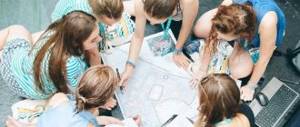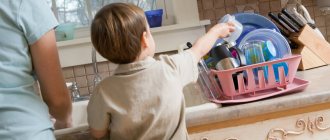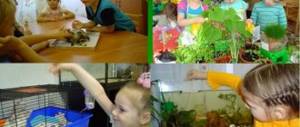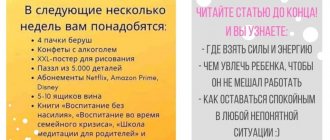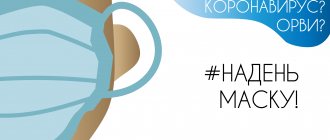Children spend most of their time playing; it is the leading activity for them. However, it is important for parents to pay attention to the productive activities of preschoolers, which will teach them independence, determination, and also help them develop the skills and abilities necessary for school and later life. You need to act in such a way as to organically intertwine two types of activities - playful and productive, this will help to achieve the best result.
Definition
What is productive activity? This is a certain form of pastime for a child, which allows him not only to have fun, but also to develop some useful skills, to create a certain product (for example, a craft) that corresponds to pre-selected characteristics. That is, it is important for parents to organize their child’s leisure time so that he not only does his favorite thing, but also develops something along the way, for example, artistic abilities.
During the learning process, the child not only learns to create something of his own, but also understands that other people’s work should be treated with respect, learns to use the material rationally, find a way out of difficult situations, select an alternative (for example, if you run out of paint of a certain color, you can take another ). In such classes, both the formation of the preschooler’s personality and his awareness of his own individuality occur.
Formation of productive activity of a preschooler
It is necessary to properly develop a training program. Children should not be doing the same thing every day. If your child loves to draw, but does not want to design or sculpt, you need to interest him. Ask to build or sculpt your house, and after it is ready, let him tell you about it, about where it is, where he likes to walk.
It is necessary to talk about the finished products, be it a drawing or an applique. At this time, speech is formed and vocabulary is replenished. For example, a child drew a kitten. Let him come up with a nickname, tell him about his character, preferences in food and games - this is creative thinking.
Productive activity is necessary not only for preschoolers, but also for primary school students. Many schools have created children's creativity centers, which are a great help in learning.
Varieties
A simple classification of productive activities of preschoolers has been adopted: it is divided into visual and constructive, and the first, in turn, includes drawing, modeling and creating appliqués. Their tasks are the following:
- sensory improvement;
- familiarization with visual materials;
- improving coordination of movements and motor skills;
- comprehension of the surrounding world;
- development of musical ear.
To organize any of these types, you should use special “toys”: construction sets, mosaics, equipment for making applique and crafts, plasticine and modeling clay. All this is interesting to a preschooler and allows him to create a certain product - a craft, a model, a figurine sculpted from plasticine.
Such activities are aimed at results, that is, in addition to developing and strengthening a specific skill, it forms the following qualities in the child’s personality:
- perseverance;
- patience;
- the desire to complete what was started;
- determination;
- persistence.
In addition, success inspires, brings self-confidence and a good mood. Modeling and drawing classes improve the baby’s fine motor skills, help quickly learn colors and shades, get an idea of shape and size, develop imagination and interest in creativity.
The need for productive activity
The purpose of the classes is the comprehensive development and education of a child of the preschool age group. Children develop in many ways, so it is important to include all types of productive activities of preschoolers in classes, without focusing only on drawing or modeling. Classes should be conducted in a playful way, and not “under pressure”; the child should realize that this is fun, and in addition, at the end of the work he will be proud of his product. At the same time, he will gradually learn the need to listen carefully to the teacher and do everything necessary to get results.
All over the world, experts have studied the productive activity of preschoolers and came to the conclusion that it is capable of developing the following qualities in children:
- Good creative imagination, a thinking mechanism, that is, the ability to think logically, compare, analyze and synthesize.
- Purposefulness, perseverance and perseverance.
- Good mental abilities, since the productive activities of preschoolers are cognitive activities.
- Fine motor skills of fingers and hand muscles.
- Methods of productive activity for preschoolers are aimed at conveying to children the need for independent work.
- Curiosity, inquisitiveness and initiative.
Classes also have a positive effect on children’s discipline; teachers noted a good connection between productive activities and sensory education. That is, in order for a child to have a good idea of an object, he must know what it looks like, its color, use, size and location in space.
During the lessons, all the qualities are revealed, primarily the mental and physical abilities of the child, and the teachers know exactly which child and what needs to be done more, they give practical advice to parents.
Productive creative activity of preschoolers provides practice and skills that will be needed for further education and work. For example, to create an applique you need to make some effort, think carefully about the placement of objects, arrange them correctly, and this requires creative actions. During classes, children gain experience in independent work.
An integrated approach is well implemented in the productive activities of preschoolers. In addition, kids are able to completely relax, and this means getting rid of all sorts of fears of society. Children, independently creating a product, can realize their ideas about a particular object in a model, and receive a material embodiment of an imaginary design.
Basic forms of conducting classes
Parents can use a variety of forms to incorporate productive activities into playtime. For example, motor games contribute to the physical development of a preschooler and improve his overall motor skills and coordination.
For comprehensive development, the following types of exercises are also necessary.
- Speech. They have a good effect on expanding the baby’s active and passive vocabulary and his ability to pronounce sounds correctly.
- Finger. Aimed at developing fine motor skills, which are directly related to speech centers and, accordingly, will contribute to the development of speech.
- Musical. Children are interested in any entertainment related to music, so they can be safely used.
- Manipulative. Helps improve hand-eye coordination and motor skills.
Parents should remember that interest and a good mood are the best ways to instill in their child a love of productive activities, so you should not force him to do anything, you should gently and tactfully lure him into the game process, then the result will be excellent. Only in this way will it be possible to develop creative abilities, self-confidence, and the desire to compose, craft, and create. Otherwise, the child may develop a persistent aversion to any type of productive activity for the rest of his life.
Comprehensive development of the baby
Parents and kindergarten teachers must make joint efforts to ensure that the preschooler develops a harmonious personality, especially for modern mothers and fathers who believe that group activities are all that the baby needs. This is not so, the acquired skills must be reinforced at home, in a playful and fun way. This is the only way to be sure that the child will receive all the necessary qualities for school and subsequent adult life (determination, willpower, perseverance), and will also acquire key practical skills.
List of skills
Let's consider exactly what skills a preschooler should have in order to be able to talk about his normal all-round development. First of all, the baby must know numbers and letters and be able to perform simple arithmetic operations.
In addition, skills related to productivity include:
- the ability to draw geometric shapes and divide them into parts using lines in a drawing or scissors;
- know colors and shades, name and show them;
- assemble puzzles, simple models from construction sets or cubes using a sample;
- color drawings without going beyond the contours;
- sculpt small details;
- draw figures or letters in the cells using a sample;
- use different pressure on the pencil.
Preschool children are able to concentrate on a specific activity for 15 to 25 minutes. This needs to be taken into account when offering them different forms of games and exercises.
Drawing classes
The easiest and most useful way to help your child engage in productive activities in preschool is to invite him to draw. Moreover, it is not at all necessary to use standard paints (pencils, felt-tip pens) and a sheet of paper; you can safely show your imagination by giving your little one new and unusual tasks. These types of activities contribute to the comprehensive development of a preschooler’s personality, developing not only his artistic taste, but also his idea of color and harmony. Over time, a child who draws regularly will develop a sense of style, the ability to combine colors and place shapes in space, and will also develop fine motor skills.
What forms of unusual drawing can you use at home?
- Drawing with a ball on whatman paper. Take any small ball, for example a tennis ball, and dip it into the paint. After this, the baby rolls it over a white sheet, leaving all kinds of tracks and lines. You can complete the drawing by adding something with a brush or pencil so that the lines take on meaning.
- Scratch. A very interesting technique that will help make home painting fun and unusual. It is done like this: a sheet of paper is painted over with colored wax crayons, after which it is properly rubbed with a candle. Next, the base for the drawing is covered with a thick layer of gouache; the parents do this with a thick brush. When the paint dries, but is not completely dry, the children get involved in the work. They are given the task of scratching a design with a special rod or a pointed stick. A sharp object will erase the top layer, allowing the colors of the crayons to appear. And kids can either use stencils or create a composition themselves.
- Drawing on ice will bring pleasure to even the most phlegmatic children. First, the parent makes a preparation: pours boiled water into a plastic container (for example, a container), freezes it. The child paints with watercolors; its structure allows the paint to penetrate the ice without any problems. You can use salt to create an unusual rough effect.
- Monotype. A very interesting method, although it is not used often. The child draws a composition on an ordinary plastic bag using bright colors. After this, the bag is applied to a sheet of paper and rubbed over it with the palm of your hand so that an imprint remains on the white surface. This will be the baby’s new “creation,” unusual and therefore very interesting.
Various techniques can be used. Parents should show the baby in advance in an unobtrusive manner how colors are mixed:
- blue + yellow = green;
- red + blue = purple;
- red + yellow = orange.
You can invite him to mix the colors on the palette himself and see what happens. Such a “little discovery” will give the baby a good mood and pride.
Modeling
To develop productive activities in preschool age, you can safely use modeling, which allows you to create three-dimensional figures. It develops fine motor skills, thinking, memory and imagination well, and for variety and maintaining interest, you can not only use plasticine, but also supplement crafts with natural and artificial materials (buttons, beads, beads, sequins, leaves, cones, twigs, stones, etc. ). In addition, the craft can be painted and decorated using counter-relief applied with a stick.
At 2-3 years old, children can be offered special soft plasticine and the simplest tasks - for example, rolling balls, flattening them between your fingers, pressing a depression in a workpiece, connecting parts into one whole. Children 4-6 years old can use ordinary plasticine or clay, since their fingers are already strong enough.
There are many interesting thematic activities that parents can offer their child.
- Fashion food: spaghetti, cheese (holes on the piece are pierced with a pen rod), fried eggs, vegetables and fruits, such as carrots, apples, oranges. For older children, you can offer mushroom sculpting.
- Animals. This process is somewhat more complicated, so all work should be divided into stages. An adult can show the child an example, and later, when the baby has already mastered the basic techniques of modeling, give him complete freedom of action.
- Favorite cartoon characters (the easiest way is to make Smeshariki with your own hands, they seem to be created for this “role”).
The parent can either verbally explain the task or provide the child with pre-prepared step-by-step instructions. In autumn, it is easy to use materials collected in forests and parks (acorns, pine cones, seeds, moss, berries) and create unusual compositions using modeling techniques.
Senior preschool age is the time for creating complex compositions, so you can invite your child to sculpt, for example, a room with furniture and other small details.
Productive activities in a preschool educational organization
Natalia Pankratova
Productive activities in a preschool educational organization
«Productive activities in a preschool educational organization»
Pankratova N. A., senior teacher,
MDOU "D/s No. 39 k.v."
Magnitogorsk,
Aituganova Olga Nikolaevna, teacher,
MDOU "D/s No. 39 k.v."
Magnitogorsk
Preschool childhood is a stage of restructuring the child’s mental characteristics and his attitude to the world around him. The essence of this restructuring is that in preschool age, internal mental life and internal regulation of the child’s behavior arise. If at an early age the child’s behavior is stimulated and directed from the outside - by adults or by the perceived situation, then in preschool age the child himself begins to determine his own behavior.
In accordance with the federal state educational standard for preschool education, the main activity of preschool children is play. However, there is another important type of activity - productive . In preschool education, productive activity is defined as the activity of a child under the guidance of a teacher, the result of which is the appearance of some product . Productive activity creates favorable pedagogical conditions for the important process of socialization of children. During this age period, productive activity along with play is crucial for the development of the child’s psyche.
In the process of productive activity, are formed in a preschool : mental activity, curiosity, independence, initiative, which are the main components of creative activity . The child learns to be active in observation, doing work, showing independence and initiative in thinking through content , selecting materials, and using a variety of means of artistic expression.
To create a drawing, an appliqué, or sculpt a figurine, you need to master certain skills, make an effort, and perform creative actions. In the process, preschoolers learn practical skills that they will later need for a wide variety of jobs . They acquire skills that allow children to feel much more independent. In addition, here children are freed from fears and stress.
Productive activities also affect the physical development of a preschooler . In the process of direct educational activities, preschool children's vitality increases, their mood and behavior improve, and their character becomes more active and cheerful.
types of children's activities include designing, drawing, modeling, applique and creating various kinds of crafts from natural and waste materials.
Each of these types of activities requires mastery of a special way of action, special skills and ideas.
In preschool educational institutions, subject, plot, and decorative drawing are used. In this activity, it is important not to allow traditional graphic images and turned into templates, but to stimulate the preschool . Therefore, an adult should encourage children to use a variety of tools , materials and image , including non-traditional ones: monotype, poking with a hard semi-dry brush; drawing with fingers, cotton swabs, palm ; imprint with cork, foam rubber, polystyrene foam, eraser and potato stamps, crumpled paper; stencil printing; ordinary blotography, with a thread, with a tube; embossing, spraying, leaf prints.
preschool children , and the use of non-classical image , various materials and tools should contribute to the creative development of children, but not become an end in itself.
Modeling from plasticine and clay is a very exciting, interesting, and useful activity. In recent years, salt dough and paper pulp have become very popular materials for modeling. Three types of modeling are used in preschool educational
1. object modeling (the child sculpts a separate object)
;
2. plot modeling ( depiction of the actions of several characters or characters and objects,
3. decorative modeling (dishes; objects of decorative art - whistles, matryoshka dolls; decoration of flat shapes with various volumetric details ).
The application allows the child to become familiar with various ways of processing paper . Children get acquainted with different paper cutting techniques (symmetrical, silhouette, ribbon)
;
master various ways of creating an expressive image (tear off, crumple, twist, bend, fold, glue paper or its individual parts; learn to use scissors . It is possible to perform appliqué with elements of drawing, design, construction; using various materials (fabric, leaves, seeds, birch bark, straws)
.
Design is a purposeful process of solving technical problems that involve the creation of buildings, bringing objects, their parts and elements into a certain relative arrangement. There are 3 types of constructive activity of a child : according to a model , according to conditions and according to plan. All types of construction are interconnected, each type develops specific abilities. For construction in kindergarten they use a large (floor)
and small
(tabletop)
building material, as well as construction sets with variously complex methods of connecting parts, constructive puzzle games.
LEGO construction and robotics are becoming increasingly popular in working with modern preschoolers
Artistic (manual)
labor is a type of
productive activity closely related to design and application.
Origami-type work is performed from paper and cardboard; game attributes, costume elements, decorations; finger and table theater; they make doll furniture, houses, cars. Natural and waste materials (foam rubber, large and small beads, polystyrene foam, eggshells, wire, flower and plant seeds, cereals, beans, leaves) are used for making crafts, jewelry, and gifts. Preschool children learn to act in given conditions, plan and jointly discuss a plan, create dynamic expressive images and collective plot compositions, show activity, initiative, independence and creativity. Children's mastery of productive activities prepares children for school.
In the educational activities of a preschool educational organization in a child’s life, there should be a place for free productive activity , which is carried out in a certain developing subject-spatial environment that stimulates children to demonstrate independence and creativity, the development of children’s interests, where there is an opportunity to participate in collective actions with peers and act independently.
A necessary condition for free productive activity is the availability of a variety of aids and materials, which should be freely available and in sufficient quantity. The child can decide for himself what materials, when and how to use. The role of the teacher in this case is to, together with the child, develop a plan and method of his activity , provide a set of materials that corresponds to the interests and stimulates the personal development of the child.
Thus , the main types of children's activities in the preschool period are playful and productive . Productive activity in preschool education is the activity of children under the guidance of an adult, as a result of which a certain product . Numerous studies have shown that it is productive activity that contributes to the development of graphic skills in children of senior preschool age , fosters perseverance, imagination , creates pedagogical conditions for the process of socialization of senior preschoolers and, along with play , is of greatest importance for the development of the psyche during this period.
Bibliography
1. Bogoyavlenskaya D. B. Intellectual activity as a problem of creativity. Rostov-on-Don, 2012.144p.
2. Novlyanskaya Z. N. Why children fantasize. M.: Education, 2012.187p.
3. Protodyakonova N.V., Kulikovskaya N.E. Features of creative thinking in children of senior preschool age with general speech underdevelopment // Young scientist. 2020. No. 3. S. 844846.
4. Khalezova N.B. et al. Modeling in kindergarten: Book. for a kindergarten teacher garden / N. B. Khalezova, N. A. Kurochkina, G. V. Pantyukhina. 2nd ed., rev. And additional M.: Education, 2012.88p.
Application
This is a very useful activity that allows a child to form an idea of shape and position in space, as well as teach him to cut out figures and create compositions from them. Training improves the thinking and imagination of a preschooler, contributes to the development and consolidation of mathematical skills.
For work, you can use not only the colored paper familiar to many, but also other unusual materials:
- old newspapers;
- paper napkins;
- candy wrappers;
- buttons;
- cereals;
- coffee beans.
It’s easy to use shaped hole punches and scissors, self-adhesive paper, and stick artificial plastic eyes on the figures. All this will help maintain interest in productive activities.
Tips for organizing productive activities
Features of the visual activities of preschoolers lie in preparation and implementation. Here it is important to avoid monotony and formalism. It is important that children engage in creativity under the strict guidance of adults. The organization should be voluntary and built on partnership with adults. Parents or teachers should think about how to attract and hold children's attention.
Tasks facing parents or teachers:
- formation in children of the rudiments of an idea of culture, art, artistic taste;
- development of creative abilities;
- teaching activities through which children become familiar with artistic culture;
- building self-confidence and individuality in children;
- strengthening physical and mental health;
- developing respect for other people's opinions;
- training in the rational use of materials;
- developing interest in one’s country and family.
- formation of aesthetic perception of the world.
When organizing, it is important to consider that activities are carried out on certain days and times. For the child, such a routine becomes familiar, a habit and attitude for the upcoming work are developed. Also, do not forget that classes are held not as an addition to traditional ones, but instead of them. Such activity can be called work in the workshop. A workshop is work in a group, it is an organized space in which beautiful, interesting and necessary things for children are created. Children's seats should not be strictly assigned to them. Each time you can choose your own neighbors again. Provide freedom of movement for children so that each child can go at any time to get the tool or material they need. The teacher must be dynamic and take place with the preschooler who needs more attention and who is lagging behind in his work.
Construction
This type of activity plays an important role in preschool age, so various mosaics and construction sets should be in every home. In addition, you can create crafts from natural and artificial materials and even from paper.
This kind of work is undoubtedly useful:
- children improve their coordination of movements, fine motor skills and spatial orientation;
- their thinking and imagination improves;
- artistic taste develops, the ability to see the beauty of one’s own creations and objects of the surrounding world;
- the child receives the most important information about such complex concepts as shape, color, size, position in space.
All this, without a doubt, will be useful in the first grade, as well as perseverance, patience, the ability to overcome difficulties, set a goal and achieve it, therefore constructive activity must be present in homework.
To make it interesting for children, you should offer them a variety of tasks:
- making gifts for parents or friends for the holidays;
- creating your own garlands and Christmas tree decorations for the New Year;
- designing your own book of fairy tales;
- preparing scenery for a puppet show;
- if several children are participating, you can organize an exhibition or a sales exhibition, for which various “exhibits” are made in advance.
Such projects are not only useful for preschoolers, but also interesting, and therefore will be productive. It is clear that the work should be consistent and follow the principle “from simple to complex”, that is, first you need to teach the child specific actions - draw, glue, cut - and only then offer to invent and design something.
All this will help develop your child’s creative abilities and successfully prepare him for school.
Productive activity for preschoolers: drawing
Kids especially love to draw. Here they have scope for imagination, everything is depicted on paper: heroes of fairy tales, space, forests, individual objects, patterns, scenes experienced in life - here the child fully realizes his thinking. By drawing, children once again relive the emotions they have experienced and reveal their thoughts. Usually, a drawing task is given on independent topics, that is, everyone decides for themselves what, how and in what color to depict. From the drawings you can judge the baby’s character and find out his fears that he keeps to himself. Sometimes it is recommended to visit a psychologist so that he can solve the child’s problem and correct his understanding of the world around him.
The best forms of work
There are a huge number of different techniques, techniques and forms that contribute to the productive and useful activities of preschoolers, but do not cause them despondency and boredom. They can be alternated.
- Weaving from multi-colored paper strips.
- Origami.
- Cutting from paper napkins or corrugated paper, creating a fun picture, such as a flower.
- Quilling - compositions made from paper strips. Creating snowflakes, flowers or a whole panel using this technique.
- Bas-relief modeling. Thick black cardboard is used as a base; wax plasticine is also required. The child cuts the material into a stack, gives it the required shape, and then glues the element onto the base. Then he works on another part in the same way and connects it to the first. The result is a product that is essentially reminiscent of the bas-relief we are used to.
- Decorate the box with cereals and coffee beans.
If you also offer your child drawing, modeling, and creating crafts from natural and artificial materials, then you can be sure: in the process of exciting play, he will acquire and consolidate skills useful for later life.
Parents should not prevent the child from showing creative abilities; their task is to help, suggest, and not teach or force. Sometimes preschoolers find completely non-standard methods of solving a given problem, causing bewilderment in adults, but this does not mean that the children acted incorrectly. They just found a way out that wasn't where mom or dad saw it. Therefore, you should not impose your own opinion on little creators; it is better to give them the opportunity to invent and fantasize, then the result will be much more successful.

